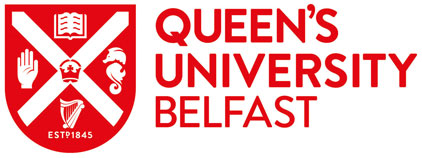Talk 1. Absence of L1 transfer of ellipsis at L2 Chinese initial stages: Evidence from L2 Chinese oral production by English and Korean speakers
by Dr Boping Yuan
This presentation reports on an empirical study investigating the role of L1 in the development of L2 speech production, by examining two types of elliptical structures in English and Korean speakers’ L2 Chinese oral production. Chinese allows vP ellipsis licensed by a model verb, as in (1), and ΣP ellipsis licensed by the auxiliary shi ‘BE’, as in (2), (c.f. Soh 2007). The scope of ellipsis licensed by shi is larger than that licensed by the model verb, as the latter includes a vP whereas the former a negator, a model verb and a vP.
Like Chinese, English also allows ellipsis licensed by a model verb, as in (3) and (4) (c.f. Merchant 2001, 2004). Although the auxiliary do in English can license ellipsis, apparently similar to shi ‘BE’ in Chinese, it can only license vP-ellipsis, as shown in (5), and it cannot license ΣP-ellipsis, as in (6). This is because the position of the English auxiliary do is at the head of ModP, the same position as model verbs in English but different from shi ‘BE’ in Chinese (c.f. Soh (2007). Accordingly, what is elided after the dummy do is a vP rather than a ΣP and therefore, unlike Chinese, ΣP-ellipsis is not licensed in English.
Korean equivalents to English and Chinese model verbs like will and hui cannot license a vP-ellipsis, as in (7). This is because items like -eul ‘will’ in (7) are verbal suffixes, and thus deleting a verb phrase in a sentence and leaving the suffix stranded would render the remnant of the sentence ungrammatical.
Like Chinese, but unlike English, Korean allows the axiliary ya ‘BE’ to license ΣP-ellipsis, the scope of which can include an auxiliary or/and a negator, as illustrated in sentences in (8), which is analogous to shi-licensed ΣP-ellipsis in Chinese. According to Kim and Sohn (1998), the dummy ya is inserted to the head of TP, which is higher than model elements in Korean.
Schwartz and Sprouse (1994, 1996) propose a ‘Full Transfer’ hypothesis that L2 learners’ steady-state L1 grammar is entirely transferred into the initial state of their L2 grammars. Given the cross-linguistic differences and similarities between Chinese, English and Korean with regard to vP- and ΣP-ellipsis, it was predicted that in their L2 Chinese oral production, English-speaking learners of L2 Chinese would produce more vP ellipsis licensed by a model verb than Korean-speaking learners and that Korean-speaking learners would produce more ΣP-ellipsis licensed by shi than English-speaking learners, at least at L2 Chinese initial stages.
English-speaking learners (59), Korean-speaking learners (69) of L2 Chinese and native speakers of Chinese (16) participated in the study. Apart from other tasks, they all completed an Utterance-Recall Task (URT), in which they listened to priming utterances recorded in a computer and then they were required to orally recall the utterance they had heard in Chinese. The results of the URT indicate that there is absence of L1 transfer at English and Korean speakers’ initial stages of L2 Chinese oral production development, as both English- and Korean-speaking learners of L2 Chinese produced few utterances with vP or ΣP-ellipsis in the URT. Instead, they produced an overwhelming number of non-elliptical utterances, in spite of the fact that they were primed with vP and ΣP-ellipsis utterances in the URT. The absence of L1 transfer is evident until post-initial stages, where, when primed with utterances with vP-ellipsis, English-speaking intermediate and advanced learners produced significantly more utterances with vP-ellipsis than Korean-speaking intermediate and advanced learners. In contrast, when primed with ΣP-ellipsis utterances, Korean-speaking intermediate and advanced learners produced significantly more utterances with ΣP ellipsis than English speaking intermediate and advanced learners. We account for the absence of L1 transfer until L2 post-initial stages in our study on the basis of a syntax-stylistics interface.
(1) Zhangsan bu hui likai Yingguo, Lisi ye [TP [ΣP bu [ModP hui [vP likai Yingguo ]]]]].
‘Zhangsan will not leave the UK, and Lisi will not either.’
(2)Zhangsan bu hui likai Yingguo, Lisi ye [TP shi [ΣP bu [ModP hui [vP likai Yingguo ]]]]].
‘Zhangsan will not leave the UK, and Lisi will not either.’
(3) John will leave the UK and Bill will [vP leave the UK] too.
(4) John will not leave the UK, and Bill will not [vP leave the UK] either.
(5) John likes Mary, and Peter does [vP like Mary] too.
(6)a. *Zhangsan will leave the UK, and Lisi does will leave the UK too.
b. *Zhangsan will not leave the UK, and Lisi does will not leave the UK either.
(7) John-i sakwa-lul mek-eul. Mary-to sakwa-lul *(mek-)eul.
John-NOM apples-ACC eat-will Mary-too apples-ACC eat-will
‘John will eat apples. Mary will too.’
(8) a. John-i sakwa-lul meke. Mary-to [ΣP sakwa-lul meke] ya.
John-NOM apple-ACC eats Mary-too apple-ACC eats BE
‘John eats an apple. Mary does too.’
b. John-i sakwa-lul mek-eul. Mary-to [ΣP sakwa-lul mek-eul] ya.
John-NOM apple-ACC eat-will Mary-too apple-ACC eat-will BE
‘John will eat an apple. Mary will too.’
c. John-i sakwa-lul mek ani-ha. Mary-to [ΣP sakwa-lul mek ani-ha] ya.
John-NOM apple-ACC eat neg-does Mary-too apple-ACC eat neg-does BE
‘John didn’t eat an apple. Mary didn’t either.’
Talk 2. Temporal-Aspectual Sentence Final Particles in English and Cantonese Speakers’ L3 Mandarin Chinese
by Dr Yanyu Guo
This paper reports on an empirical study examining the transfer source in third language (L3) acquisition at the initial stage and the morphosyntactic development at later stages. Both Mandarin and Cantonese use Sentence Final Particles (SFPs) to denote temporal-aspectual meanings, while English employs tense/aspect markers to express those meanings. Hence Cantonese is predicted to be the source of transfer in our L3 study on the basis of the Typological Primacy Model (TPM; Rothman, 2010, 2011, 2015) and the Linguistic Proximity Model (LPM; Westergaard et al., 2016). Data from a sentence-picture matching task confirm the prediction that initial transfer is from the structurally/typologically similar language Cantonese and the transfer is facilitative. The results also show that mapping problems (Lardiere, 2007), and lack of enough evidence in the L3 input can result in unacquirability of a certain particle.
| ← | April 2024 | → | ||||
|---|---|---|---|---|---|---|
| M | T | W | T | F | S | S |
| 1 | 2 | 3 | 4 | 5 | 6 | 7 |
| 8 | 9 | 10 | 11 | 12 | 13 | 14 |
| 15 | 16 | 17 | 18 | 19 | 20 | 21 |
| 22 | 23 | 24 | 25 | 26 | 27 | 28 |
| 29 | 30 | 1 | 2 | 3 | 4 | 5 |






Copyright © 2016-2024 MEITS